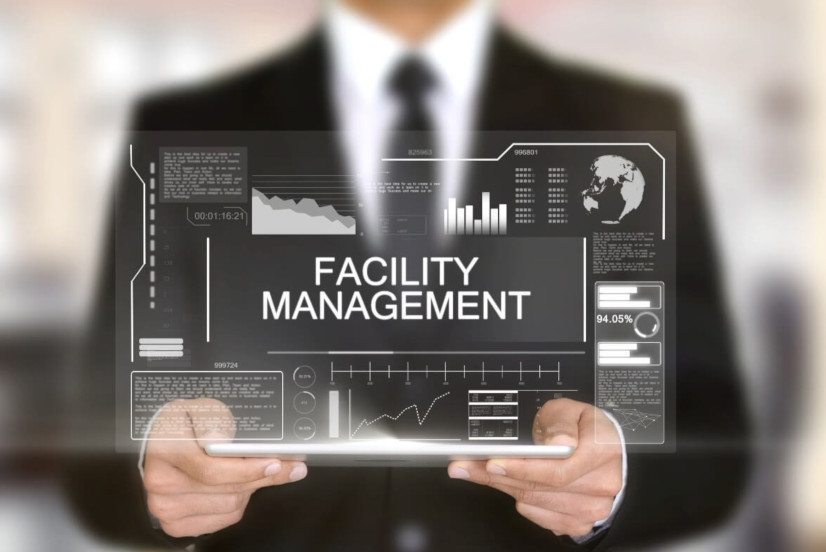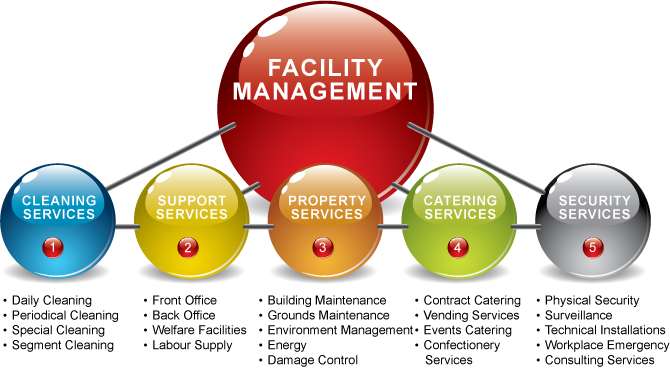Facility Management for Commercial Buildings-- A Full Summary
Facility Management for Commercial Buildings-- A Full Summary
Blog Article
Trick Trends Shaping the Future of Center Monitoring in 2024
As we look in advance to 2024, the landscape of center monitoring is poised for substantial transformation, driven by numerous key fads. The integration of smart building modern technologies and a shift in the direction of data-driven decision-making guarantee to improve operational performance while focusing on sustainability in practice.
Smart Building Technologies

Smart building innovations include a broad range of systems, including smart lights, HVAC controls, and safety and security systems. By incorporating these systems, facility managers can keep an eye on and readjust parameters in real-time, leading to significant decreases in power waste and functional expenses. Wise sensing units can identify tenancy levels and change illumination and temperature appropriately, ensuring that energy is only used when needed.
Additionally, these modern technologies facilitate boosted information collection, allowing organizations to track usage patterns and determine chances for further improvements. The application of smart building modern technologies not just adds to sustainability objectives yet also produces much healthier job environments that can boost worker performance and fulfillment.
As we move right into 2024, the fostering of clever structure technologies will likely speed up, reflecting a wider shift in the direction of more intelligent, receptive, and lasting facility monitoring techniques.
Data-Driven Decision Making
Significantly, organizations are leveraging data-driven decision making to enhance facility management practices. By taking advantage of information analytics, center supervisors can acquire actionable insights that dramatically enhance functional performance and source appropriation. The combination of sophisticated modern technologies, such as IoT sensing units and real-time surveillance systems, makes it possible for the collection of vast quantities of information on building performance, tenancy rates, and power intake.
This riches of info enables center managers to determine fads, forecast maintenance demands, and proactively address concerns prior to they intensify. Anticipating analytics can forecast devices failures, lowering downtime and repair work expenses. In addition, data visualization tools promote better interaction among stakeholders, making certain that educated decisions are made collaboratively.
Additionally, data-driven methods boost strategic planning by making it possible for center managers to assess the performance of existing practices and make educated options pertaining to financial investments in technology or facilities. As organizations significantly prioritize functional excellence, data-driven choice production is positioned to end up being a keystone of effective center management strategies in 2024 and beyond. Eventually, the ability to utilize data effectively will encourage organizations to develop more efficient, effective, and durable centers.
Sustainability and Green Practices
The focus on data-driven decision making naturally aligns with the growing concentrate on sustainability and environment-friendly methods within facility monitoring. As organizations increasingly prioritize ecological duty, facility managers are leveraging analytics to optimize source usage, minimize waste, and lessen carbon footprints. This critical technique makes it possible for the assimilation of energy-efficient systems, such as LED lighting, smart HVAC controls, and renewable energy sources right into facility operations.
Furthermore, the application of lasting practices extends beyond power consumption. Center supervisors are promoting and taking on environment-friendly materials reusing campaigns to produce a round economic situation within their centers. This not only boosts the ecological account of the company but also promotes a culture of sustainability amongst staff members.
Compliance with ecological guidelines is an additional essential facet driving the adoption of eco-friendly techniques. By making use of information analytics, facility supervisors can check conformity metrics and identify areas for enhancement, making certain adherence to global and regional sustainability requirements.
Hybrid Job Versions
A substantial change in the direction of crossbreed work versions is improving the landscape of center monitoring in 2024. This standard combines remote and in-office work, requiring a reevaluation of space utilization, resource appropriation, and worker involvement methods. Organizations are increasingly acknowledging the value of adaptable offices that deal with diverse demands and preferences.
Center supervisors must adjust by carrying out versatile workplace designs that sustain joint initiatives while offering areas for concentrated job. This consists of the assimilation of technology to help with smooth communication and cooperation amongst in-office and remote staff members. Smart structure services, furnished with analytics and sensing units, permit real-time monitoring of area use, allowing organizations to optimize their settings successfully.
In addition, crossbreed work models highlight the demand for reliable center management that focuses on staff member experience. This includes not only innovation and area design yet also the development of plans that advertise a balanced work-life dynamic. As firms navigate this transition, the function of facility administration comes to be critical in developing a nimble office that fosters efficiency and drives organizational success. Essentially, the hybrid work model is changing center administration, motivating an aggressive approach to fulfill the evolving demands of the workforce.
Boosted Passenger Health
As organizations accept hybrid work designs, a heightened concentrate on resident wellness is ending up being essential to center administration techniques. Facility Management. This shift acknowledges that a healthy and pleased workforce directly impacts productivity and retention rates. Center supervisors are currently focusing on atmospheres that advertise mental and physical health, incorporating aspects such as natural lights, biophilic style, and obtainable wellness resources

Modern technology plays an important role in click to read more this evolution. Smart structure systems can keep an eye on environmental factors and change settings in real-time, ensuring optimum comfort levels - Facility Management. Comments devices, such as occupancy sensing units and staff member surveys, permit facility managers to consistently fine-tune wellness initiatives based on owner requirements.

Conclusion
In 2024, the future of facility administration will be substantially affected by the assimilation of wise building modern technologies and data-driven decision-making, fostering boosted functional performance. Sustainability initiatives will prioritize environmentally friendly methods, while the development of hybrid work models will certainly necessitate flexible office layouts. Additionally, an enhanced concentrate on occupant wellness via advanced a/c systems and biophilic design will certainly contribute to healthier work atmospheres. These patterns jointly emphasize the evolving landscape of facility administration in response to modern challenges and opportunities.
Center managers are promoting and embracing green materials reusing efforts to produce a circular economy within their facilities.A considerable change in the direction of hybrid work models is reshaping the landscape of facility monitoring in 2024.In addition, crossbreed job models highlight the requirement for effective facility management that focuses on employee experience.As organizations welcome hybrid job versions, an increased emphasis on resident wellness is becoming integral to center monitoring methods.In 2024, the future of center management will be considerably affected by the assimilation browse around here of smart structure technologies and data-driven decision-making, promoting improved operational effectiveness.
Report this page